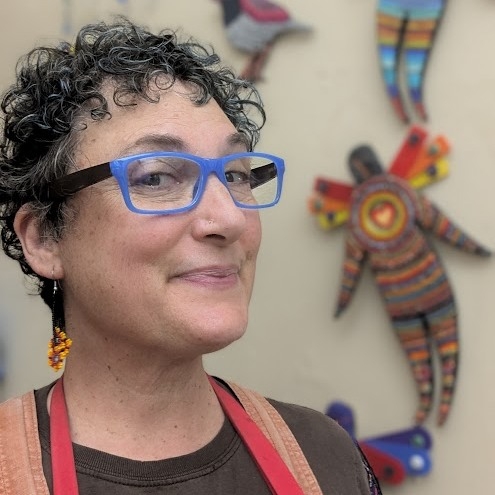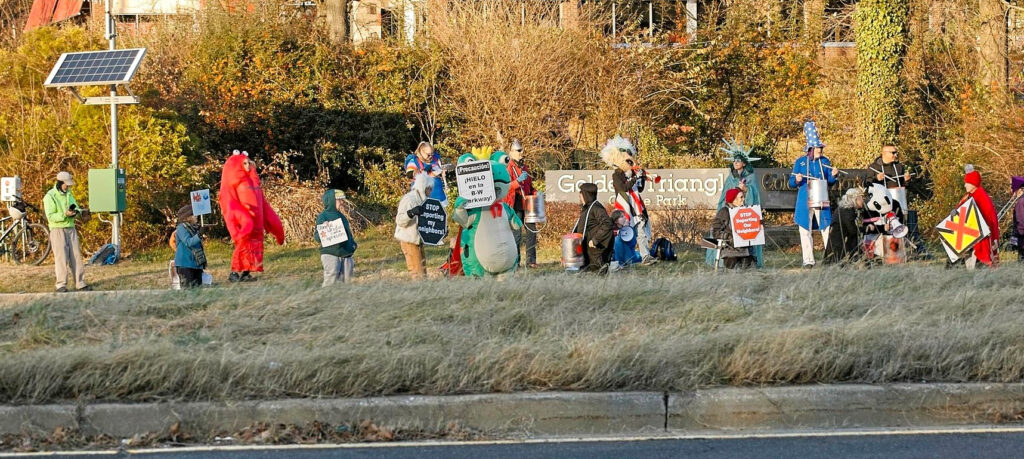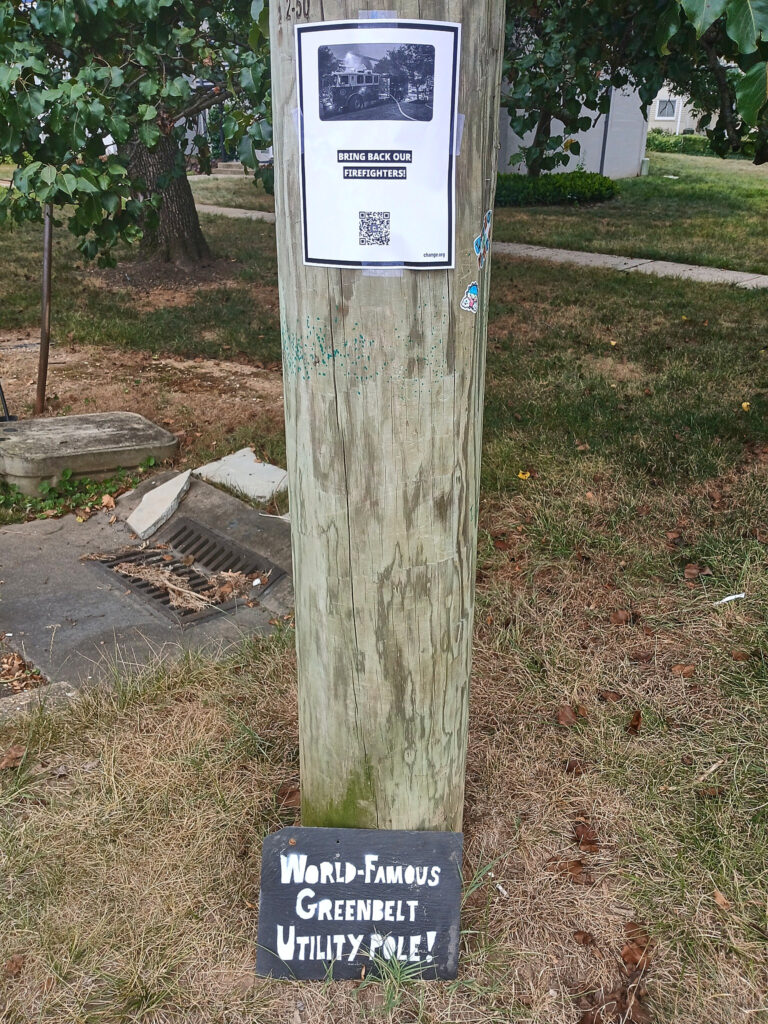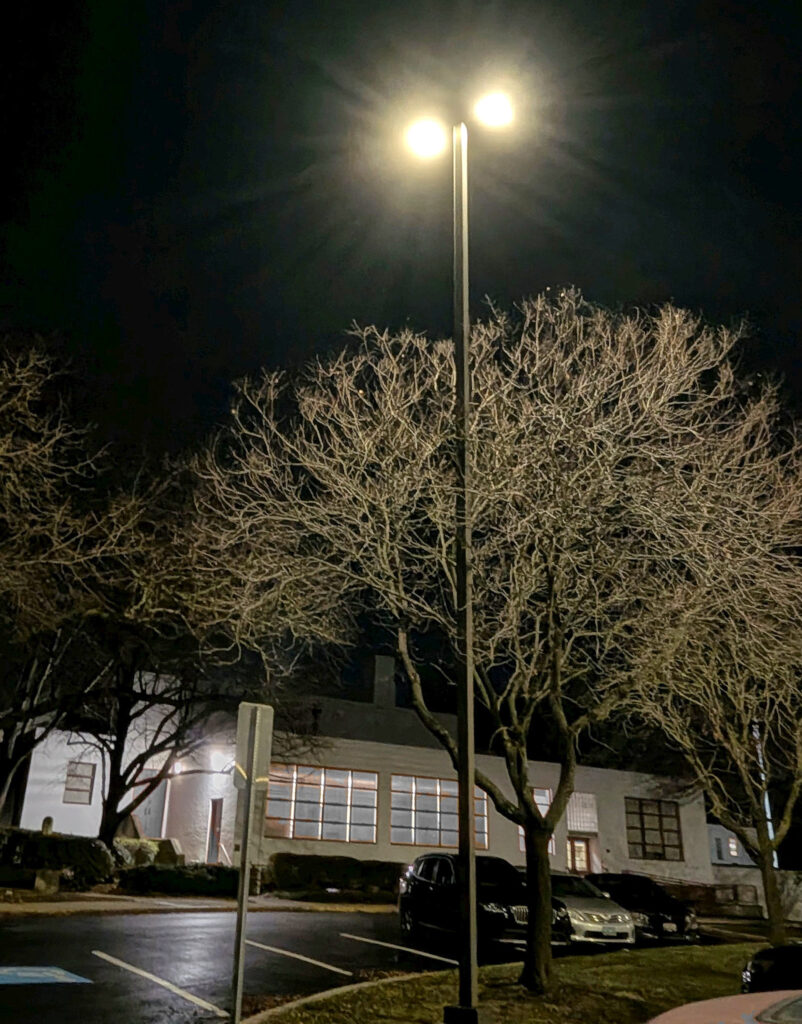Somewhere along the roughly 500 miles of the Camino de Santiago she’s currently hiking, Rachel Ann Cross will turn 62. The musician and artist-in-residence in Greenbelt has hiked this pilgrimage across Spain, known in English as the Way of St. James, twice before. Now she braves the northern route, which features more mountains and fewer people.
“It’s an amazing walking meditation,” says Cross, who enjoys the inspirational sights and chance to meet people from all over the world.
Cross’ hikes are one of many of her muses. From her childhood in Los Angeles and Columbia, Md., to her early adult life in New York City, Paris and Washington, D.C., the world around her would inform the artwork she makes, the classes she teaches and the life she lives.
That life is defined by a spiritual dedication to the arts, but that wasn’t always certain. Near the end of her studies, Cross waited tables to pay rent alongside her boyfriend at the time, now her husband, Henry Cross.
“At some point,” she recalls, “we looked at each other and said, ‘are we going to be in the restaurant business – or are we going to be in the arts’”?
They vowed to remain in the arts.
My Language Is the Arts
Cross made both music and visual arts since being a teenager. They were important to her in getting through those years and she found that she was good at them.
“My language or how I made sense of the world was through the arts,” says Cross.
Cross could express herself and meet other people through art. She would go to open mics and meet other musicians that way.
Born in Washington, D.C., her family moved to Los Angeles, where she found early inspiration for her art. For eight years, they lived in Watts, where Cross’ mother was an art teacher. The area is known for the Watts Riots in 1965 and also the Watts Towers, an historic landmark that late artist and resident Simon Rodia designed and built by hand out of scraps.
The towers served as a significant artistic influence for Cross, who would climb around them as a child. She was fascinated by Rodia’s use of repurposed materials and emulates the practice in her own work.
“Early on, I saw that as something beautiful and fantastic,” Cross says.
Now, she sees everything as art supplies because the world has so many different materials to offer. She adopts the perspective of someone who just landed on Earth and doesn’t know how people use things; she looks at the color, shape and texture of things and decides from there what she can do with them.
Cross often uses beads or broken jewelry that’s either donated to her or bought from thrift stores. That way, she says, “everything gets a new life.”
To Cross, this makes her art more human. “As humans, we get to recreate ourselves all the time and give ourselves new life,” she says.
Cross says her art is greater as a whole than the scraps she uses before they’re put together.
“I feel that way about human beings – when we work together, when we unify, that’s when we’re at our best.”
Post High School Years
After high school, Cross went to Parsons School of Design in New York City. She was in the city at the same time that prolific artists Keith Haring and Jean-Michel Basquiat were starting their careers as graffiti artists, and while Andy Warhol was still alive.
New York “formed a lot of my confidence that people could make a life in the arts, because in New York City it’s everywhere, there are a lot of them,” says Cross. “It was a very frenetic and amazing time.”
During an exchange year in Paris, Cross made money busking around museums, at metro stations and in trains where she met musicians from all over the world. “It was a very integrated music and art kind of life there,” she says.
But art schools at the time, Cross says, didn’t teach students about the business side of art. After her time in Paris, she took a couple years off from studying while she learned that for herself. She “did all kinds of things to get through and figure it out,” like art shows, busking, waiting tables and bartending. She then finished her formal education at the Corcoran School of Art and Design in Washington, D.C., laying the groundwork for the rest of her life as an artist.
Planet Rachel
Before she went to college, Cross’ family made one more move from coast to coast, this time from Los Angeles to Columbia, Md. While living there she was first introduced to Greenbelt, where she played guitar at the New Deal Café. Columbia was a planned community much like Greenbelt, which may be why she resonated with it, she says.
Now, Cross has a studio on the third floor of the Community Center among seven other artists granted residence by the city. She calls her own business and website Planet Rachel.
Since beginning her residence in 2016, Cross has taught all kinds of classes in the visual arts as well as music. She began offering guitar classes, but switched to teaching ukulele a couple years before the pandemic. “It really took off,” she says, because the ukulele is a much more accessible instrument for people than guitar and had a greater appeal to residents looking for something to do.
Her students have high praise for her. “She’s the best,” says Jan Morrow. “We started out as beginners. We had two chord songs, and now we’re playing songs that were difficult at first but … we’ve advanced.”
Another student, Laura Bonkosky, says, “She’s really good at breaking things down for [students of] different levels.” “She’s also really funny,” Bonkosky added, “funny and warm.”
Apart from classes and lessons, Cross also hosts an annual recital called the Ukulele Picnic, where her students and anyone else can come to the Community Center to sing and play music (see the May 1 issue).
She’s appreciative of the residency program and praised it as a model of community arts engagement. “I wish that all cities would have similar programs,” Cross says, including Takoma Park, where she now lives.
Community programs or not, she says, “I think artists find artsy places and they find the artsy people. They find their tribe.”
After Cross reaches Santiago de Compostela, her current camino’s final destination, she’ll return to her work in Greenbelt in June. She encourages people to come to artists’ open studios at Greenbelt and sign up for art, music or dance classes.
“The arts are uniquely human,” Cross says, “and without them, I don’t know what we are.”
Will Hammann is a student at the Philip Merrill College of Journalism writing for the Greenbelt News Review.





